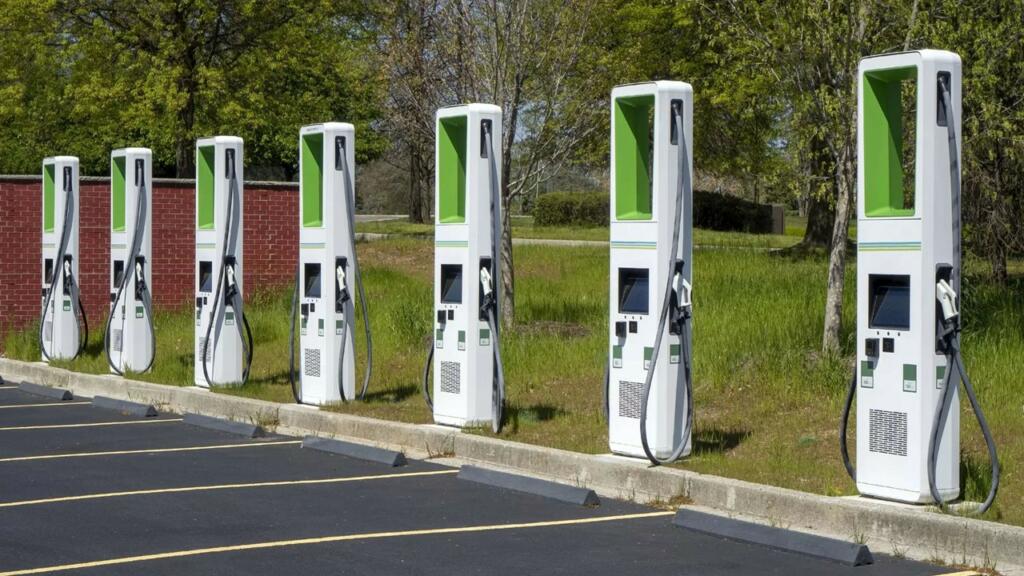EV Charging Stations India: In 1972, the Stockholm conference was the first meeting of its kind, as it was the first conference that made the environment a major issue on the global stage. Ahead of that, there are a number of conferences and summits that are wholly dedicated to environmental causes. After almost 20 years, the 1992 Rio Conference, also known as the United Nations Framework Convention on Climate Change (UNFCCC), took place and established the governing body of the convention, called the Conference of Parties (COP). Now this COP deals with each country’s commitment to reduce carbon emissions through Nationally Determined Contributions (NDC). India too has committed to the NDC and is working towards it with extensive patience. One such attempt has recently been made by the government.
Indian NDC and carbon-reducing measures
In 2020, India updated its NDC and committed to reducing its emissions intensity by 45% by 2030 compared to 2005 levels, increasing the share of non-fossil fuels in its power sector to 50% by 2030, and achieving a net-zero emissions target by 2070.
India’s NDCs included adaptation measures, such as enhancing climate-resilient agriculture, building climate-resilient infrastructure, and improving access to water and sanitation in vulnerable areas. Solar, wind, hydro, and nuclear power are able to replace coal as electricity generating sources, but what about fossil fuels used by vehicles? The answer is that electric vehicles, trains, and buses are already running on electric power. But for other vehicles on the road like trucks, cars, bikes, and scooters, there are some issues that need to be addressed.
Charging Stations: The biggest challenge for EV
The most important challenge for EV is to set up a parallel infrastructure to support the EV movement. The first and foremost requirement for this, is the EV charging stations. Charging stations work as the backbone for long-distance travel.
The government is striving to work for that because it knows, that the EV market is expanding and that there are infrastructural needs. To that extent, the centre has taken affirmative steps.
The Ministry of Heavy Industries puts effort
The Ministry of Heavy Industries in India has provided a subsidy transfer of Rs 800 crore to public-sector oil companies to establish 7,432 electric vehicle (EV) charging stations. This initiative will supplement the current 6,586 public EV charging stations and encourage the use of EV four-wheelers in the country. The Minister for Heavy Industries, Mahendra Nath Pandey, stated that this effort will increase the adoption of EVs.
As per knowledgeable officials, the subsidy will only be provided for the installation of Combined Charging System (CCS)-II, EV fast chargers and not for Charge de MOve (CHAdeMO), due to the greater utility of CCS chargers in the country. Although developers are allowed to set up CHAdeMO fast chargers, but they will not receive the subsidy. India’s preference for CCS aligns with the US government’s decision. The EV stations will comprise both fast and slow chargers, but to lower the setup cost, the number of guns for both types of chargers eligible for subsidy has been halved. This subsidy grant will aid OMCs in achieving their target of building 22,000 EV charging stations by 2024.
CCS vs CHAdeMO
Now you must be thinking, What are CCS and CHAdeMO? So let me just simplify it for you. CCS and CHAdeMO are two types of fast charging standards used for electric vehicles. CCS was developed by European and North American carmakers, while CHAdeMO was primarily designed by Japanese carmakers.
CCS uses a single plug that combines both DC and AC charging connectors, allowing for charging at different power levels. It can deliver power up to 350 kW, which is much faster than CHAdeMO.
CHAdeMO uses a separate connector for DC charging and can deliver up to 62.5 kW of power. It is not as fast as CCS, but it is still widely used in Japan and some other regions.
In summary, CCS and CHAdeMO have different designs and charging speeds. CCS is faster and has a more streamlined design, while CHAdeMO is slower but still commonly used in some regions.
Towards a robust EV ecosystem
Mahendra Nath Pandey said, “The new EV charging stations will be deployed at a cost of roughly Rs 1000 crore, of which 80% will be subsidised through the Faster Adoption and Manufacturing of Electric Vehicles in India (FAME India) Phase II.” According to him, this move by the government will boost the electric vehicle ecosystem in India.
Speaking about the locations for the set up of charging points, the minister further elucidated, “These fast EV charging stations will be set up in all the major cities, highways, and motorways across the country. Issues related to land availability for charging stations will be addressed since they will be set up on the petrol pump premises.”
The Indian Oil Corporation Limited (IOCL), Bharat Petroleum Corporation Limited (BPCL), and Hindustan Petroleum Corporation Limited (HPCL) will receive this funding to establish and activate EV public charging stations at fuel retail outlets in the country. The amount will cover the cost of upstream infrastructure and charging equipment installation. As per the Minister, these companies have pledged to set up the charging stations by the end of the 2023–24 fiscal year.
Support TFI:
Support us to strengthen the ‘Right’ ideology of cultural nationalism by purchasing the best quality garments from TFI-STORE.COM
